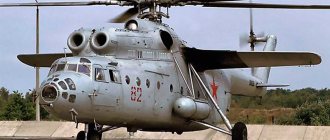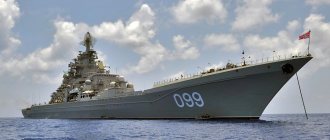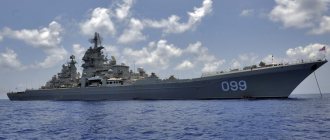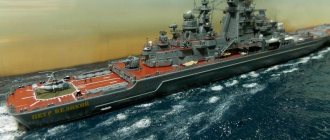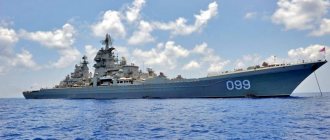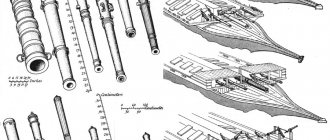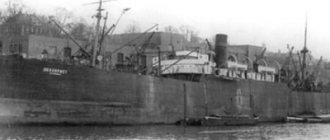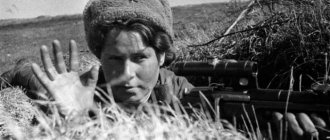Peter the Great pursued an active foreign policy, trying to strengthen the power of the Russian state. He understood how important it was to have access to the Baltic Sea, because for international trade with the northern countries of Europe, Russia had only one port - Arkhangelsk. The task of gaining access to the Baltic Sea became the leading reason for Peter joining the coalition called the Northern Union and entering the Northern War. One of the first major battles was the battle of Narva. History has preserved the second name of this bloody battle - the Narva Confusion, since the Russian army suffered a crushing defeat near Narva. Why was the outcome of the battle so disastrous and what lessons was the king able to learn from this extremely unfortunate event?
M. Yu. Shankov – Charles XII near Narva
Lesson from Karl
The war almost turned into immediate collapse for Peter. The Russian troops that besieged Narva were unable to achieve success until the main Swedish forces appeared at the city walls.
The Battle of Narva, which took place on November 30, 1700, ended in a brilliant victory for the Swedes. Fearing complete extermination, the Russian commanders agreed to capitulate. The trophies of the Swedish army were 20,000 muskets, the royal treasury of 32,000 rubles, and 210 banners. If the Swedes lost 677 people killed, about 7,000 soldiers and officers died and went missing in the Russian army.
In honor of the victory at Narva, a medal was minted in Sweden with the image of a crying and running Russian Tsar.
Peter I did not personally take part in the battle, but took his failure very hard.
Swedish victory in the Battle of Narva. Gustav Cederström. 1910 reproduction
Crucial moment
As soon as Karl arrived, he immediately attacked the Russian troops. The Duke de Croys extended his positions over seven miles. The soldiers waited for the enemy for a long time. The German uniforms did not keep them warm. A cold wind blew through the tired soldiers scattered throughout the area. Meanwhile, Charles organized his troops into a wedge and decisively led them on the offensive.
The Russian soldiers were scared; they thought that the German officers had betrayed them. The Russians shouted: “The Germans have changed!” After this exclamation, Russian soldiers began to beat their own officers. Then they began to run away.
While the soldiers were crossing Narva, a huge number of them drowned. Karl was delighted by this circumstance. Previously, he was afraid of an attack from the rear, but now all fears have disappeared. The Swedes began to drive away the fleeing infantrymen. The cries about the betrayal of the Germans grew louder, and as a result, the Duke of Croys refused to fight and surrendered to the Swedes. With more courage, de Kruy could have won the battle, because there were not so many Swedes. But the Duke was afraid of losing and did not want to make excuses to Peter.
Dream of revenge
However, oddly enough, the disaster near Narva benefited Russia. The self-confident Charles XII considered that Peter was no longer his rival and deployed his main forces against Saxony and the Polish-Lithuanian Commonwealth.
The Russian Tsar, having received a respite, began to restore and strengthen the army. The word “Narva” haunted Peter - he was going to take revenge for his defeat.
In 1702, Russian troops under the command of Boris Sheremetev besieged the Swedish fortress of Noteburg, located at the source of the Neva. In the spring of 1703, after a week-long siege, Russian troops captured the Nyenschanz fortress at the confluence of the Okhta River and the Neva.
Having taken control of the flow of the Neva, Peter I founded St. Petersburg at its mouth in May 1703.
In 1704, Sheremetev's troops entered Livonia and besieged Dorpat. In July 1704, with the personal participation of Peter I, the fortress was taken.
Article on the topic
Field Marshal, Count, almost a monk. Victories and defeats of Boris Sheremetev
Further reading[edit]
- Snyder, Kerala (2002). The Organ as a Mirror of Its Time: Reflections of Northern Europe, 1610–2000
. ISBN 978-0195144154. - Black, Jeremy (1996). Warfare.
From the Renaissance to the Revolution, 1492–1792 .
Cambridge Illustrated Atlases. 2
. Cambridge University Press. ISBN 0-521-47033-1. - Frost, Robert I (2000). Northern wars.
War, State and Society in Northeastern Europe 1558–1721 . Longman. ISBN 978-0-582-06429-4. - Massey, Robert (1980). Peter the Great, His Life and World. Ballantine Books, 928 pages. ISBN 9780307817235.
- Erickson, Lars (editor) (2003). Svenska slagfält
(in Swedish). Wahlström & Widstrand. ISBN 91-46-21087-3.CS1 maint: additional text: list of authors (link) - Ullgren, Peter (2008). Det stora nordiska kriget 1700–1721
[
The Great Northern War
] (in Swedish). Stockholm: Prism. ISBN 978-91-518-5107-5. - Porfiryev I.E. (ed.) (1958). Peter I. Grundläggare av den ryska Regjära arméns och flottans krigskonst
(in Swedish). Hörsta förlag.CS1 maint: additional text: list of authors (link) - Kuvaya, Christer (2008). Karolinska krigare 1660–1721
[
Karolinska Warrior 1660–1721
] (in Swedish). Schildts Förlags AB, 139 pages. ISBN 978-951-50-1823-6. - Bespalov, Alexander (1998). North War. Charles XII and the Swedish army. The path from Copenhagen to Perevolochnaya. 1700–1709 [ Northern War.
Charles XII and the Swedish army. The path from Copenhagen to Perevolochna . Moscow: Reitar. ISBN 5-8067-0002-X. - Petrov, A. V. (1901). City of Narva.
Its past and attractions in connection with the history of consolidating Russian dominance on the Baltic coast. 1223–1900 . Saint Petersburg. ISBN 9785446084876.
“Fake” Schlippenbach: how the Russians pretended to be Swedes
At the same time, the second part of the army, commanded by Field Marshal-Lieutenant General Georg Ogilvi, headed towards Narva.
The Swedish garrison of Narva consisted of 3,500 infantry and 1,000 cavalry. The Swedes had 570 guns.
Back in April 1704, Russian troops under the command of Pyotr Apraksin occupied the mouth of the Narva River. Attempts by the Swedish fleet to deliver food and reinforcements to the fortress ended in failure.
On May 30, the Russian army under the command of General Anikita Repnin crossed to the left bank of the Narva and camped 5 versts from Narva. The Russians occupied almost the same positions as in 1700.
The Swedes in Narva, remembering the experience of four years ago, were waiting for outside help. There was a rumor that Wolmar von Schlippenbach's corps was approaching the city. And indeed, one day the besieged saw that the Russians were seized with panic - a large Swedish detachment was breaking through their fortifications. 150 cavalry and 800 infantry under the command of Lieutenant Colonel Markwart were sent from Narva to help.
But still, something confused the commander of the Narva garrison. There was something unnatural and feigned about what was happening. The “approach of Swedish assistance” was a military trick of Peter I - Russian dragoons and soldiers of the Semenovsky regiment were dressed in the uniforms of the Swedish army.
As a result, the detachment sent from the fortress to help was defeated. 300 Swedes were killed and more than 40 were captured, including Lieutenant Colonel Markwart. The Russian army lost only four killed.
Peter I, however, was dissatisfied. The hope was that with the help of a masquerade they would be able to break into the city. In reality, the besieged were not so careless, and it was not possible to capture Narva without a long siege.
A.E. Kotzebue, The Capture of Narva. reproduction
Army restructuring
The backbone of the newly formed army was the Preobrazhensky and Semenovsky regiments. Peter established the duty of recruiting: each class had to nominate a certain number of recruits.
As a result, by 1708 the army of 40 thousand turned into 113 thousand. The warriors were well armed.
New factories were built to supply the army. The first of these were metallurgical enterprises in the Urals. There they made cannons, cannonballs, smelted cast iron and iron. Factories were established that produced powder mixtures, weapons, and textiles for military needs.
Officers were trained in special schools. Non-commissioned officers received education in 50 newly opened institutions. Nobles were sent to study abroad. Once they returned, Peter had no need to hire foreigners.
The head of state issued regulations with instructions, summing up the results of many years of military operations: the Northern War, the Narva Confusion.
The autocrat paid great attention to the formation of naval forces. The fleet was built in the south, north and Baltic. In total, approximately 900 ships were built during Peter's reign.
General Gorn's stubbornness
Schlippenbach's corps, a real one, not a disguised one, actually went to the aid of Narva, but in June it was stopped in battle by the Russians.
As the siege dragged on, the king left for Dorpat, from where he returned with victory and additional troops released after the capture of the city.
In total, the Russian siege army near Narva consisted of 30 thousand infantry, 16 cavalry regiments, and 150 guns.
By the beginning of August 1704, siege weapons were delivered to Narva, after which Russian artillerymen began to methodically destroy the Swedish fortifications.
After the Gonor bastion was destroyed, which opened a large gap in the wall, Peter I invited the commandant of Narva, Rudolf Horn , to capitulate in order to avoid unnecessary casualties.
Major General Gorn not only refused, but also allowed himself to remind the Tsar about the Russian collapse near Narva in 1700, which greatly angered Peter I.
Article on the topic
Bad good Peter. What was the first Russian emperor like?
Story
After the death of the Swedish king Charles XI and the accession of the young king Charles XII in Sweden (1697), the Northern Alliance emerged in Europe - a coalition of states (Denmark, Russia and Saxony) ready to oppose Sweden and take advantage of the king’s youth for their own territorial acquisitions.
On February 11 (February 21), 1700, the troops of the Elector of Saxony and King Augustus II of Poland invaded Swedish Livonia without declaring war. Augustus hoped to capture Riga, which occupied a key strategic position in the Baltic states, and thereby, firstly, weaken the Swedes, and secondly, get ahead of his ally, Russia, in territorial acquisitions.
Tsar's slap in the face
On August 20, 1704, the general assault on Narva began. In that era, there was also a kind of “penal battalion” - the first to run to the walls with assault ladders in their hands were soldiers who had previously been sentenced to severe punishment, including the death penalty, for serious violations of military discipline. Anyone who survived the battle was granted a pardon.
At noon the signal was given for an attack with five cannon shots. After three hours of fierce fighting, the Russians took control of the main rampart. Rudolf Horn led his soldiers into the old city, but the situation for the defenders became hopeless.
There is a version according to which the Russians were so furious that at first they did not even hear the signal of surrender given by the Swedes. Only Peter I personally was able to stop the beating.
The king usually showed leniency towards captured enemy generals, but in this case he gave vent to his feelings. “Couldn’t you have put out a white flag a long time ago?” asked Peter and immediately gave the Swede a heavy slap in the face.
By order of the king, Horn was sent to the casemate. Only in 1715, when the fate of the Northern War as a whole was decided, Horn would be exchanged for Russian prisoners captured by the Swedes.
Article on the topic
For Rus' the stepmother. Famous foreigners who served in the Russian army
Interests of the country
At that time, Russia had three main tasks in the field of foreign policy:
- access to the Baltic;
- access to the Black Sea;
- reunification of lands.
Peter began his international activities with the struggle for access to the Black Sea. The Baltic was attractive from the point of view of trade routes with Europe. European countries could help Peter in implementing plans for the technical development of Russia.
In his desire to possess the shores of the Baltic, Peter continued the policy of his predecessor kings. Ivan the Terrible fought for the Baltic coast, he lost part of his lands. Fyodor Ivanovich returned these territories to Russia, but they were again lost under Vasily Shuisky. All subsequent kings could not forget about the loss. However, Tsar Alexei was busy with relations with Poland and Turkey. Under Peter, relations on the southern side were established, and Peter decided to take up the Baltic issue.
Both Peter and Augustus, King of Poland, had territorial claims to Sweden. Peter wanted to return the lands conquered by Sweden in the 17th century. The Russian kingdom made claims to Ingria (Ingria) - a territory that in our time corresponds to the Leningrad region. The Narva fortress, as the center of Ingria, became the main target of Russian attack.
“The Battle of Narva” will be for charity
Published: luarvik 11|04|2013 ||
On April 13, the international professional boxing tournament “Battle of Narva” will take place in the “Energy” hall, to which many Estonian sports stars are invited as guests of honor.
The main organizer of the tournament, the president of the All Stars sports club, Alexander Karavaev, told Vir Prospekt that part of the funds from ticket sales will be transferred to the Narva association of families raising children with disabilities - the NGO Pro-Spero.
The organizers of the boxing show hope that the “Battle of Narva,” in addition to specific financial assistance to children, will help popularize the very idea of charity and support for those who need it.
The elite of Estonian sports were invited to the event as honored guests: discus thrower, Olympic champion Gerd Kanter, Olympic decathlon champion Erkki Nool, two-time silver medalist of the European Championship, swimmer Indrek Sei, famous biathlete Even Tudeberg, one of the best basketball players in Estonia, who played in the NBA , Martin Myursepp, bronze medalist of the Sydney Olympics, judoka Alexey Budylin and other famous athletes.
Recommended for viewing: “The Battle of Narva” (report) The Battle of Narva 2012 (photo) The weigh-in took place. Boxers are ready for the “Battle of Narva” (photo)
Most read
09 August 2019
The tragedy about the insidious tax collector turned out to be “a mixture of nonsense and nonsense, multiplied by nonsense”
09 August 2019
Taking this seemingly simple step towards public improvement was not so easy.
07 August 2019
A battle without winners. True facts about the battle of Prokhorovka in 1943
In the famous tank battle, neither side completed its tasks. But it largely determined the outcome of the Battle of Kursk.
02 August 2019
Horseless courtier. What Makarenko wrote about Prince Kochubey
The famous Soviet teacher began his teaching career by serving as a tutor in Dikanka, the Kochubey estate in the Poltava region.
02 August 2019
The first angel, who burned in a fire in 1756, was created from this drawing by Dominico Trezzini.
July 26, 2019
The great artist did not manage to conquer the city on the Neva the first time.
July 19, 2019
At its origins was a tourism teacher from Leningrad, Vladimir Dobkovich.
July 10, 2019
The battle buried the great-power dreams of Charles XII.
June 28, 2019
Building with dragons and peacocks. The history of Tupikov's house on Liteiny Prospekt
When creating the decorative decoration of the facades, the architect seemed to completely forget about practicality, plunging headlong into the world of fairy tales.
June 28, 2019
The outstanding choreographer and teacher was discarded in his old age like a boring toy.
June 26, 2019
Exhausting work
-What were our losses?
— Official data has never been published. For a long time after the war, it was believed that 30-40 thousand people were lost in the battle for Ivangorod and Narva. On the 30th anniversary of the Victory, the former commander of the 2nd Shock Army, Fedyuninsky, came to Narva and, talking with veterans, said: they say, we must admit, we lost about a hundred thousand dead near Narva.
If we talk about the Tannenberg Line, then, according to Estonian historians, in ten days of fighting the Red Army at Sinimäe lost 60 thousand people. By the way, Fedyuninsky subsequently noted that if the Germans had not left Tannenberg, our troops would have taken it anyway, “even if only advancing head-on.” Many military leaders of the Red Army preferred exactly this tactics...
The significance and scope of the Battle of Narva should in no way be underestimated. If only because, as historian Arved Kalvo noted, near Narva “more Heroes of the Soviet Union were born than in any other battle on the territory of Soviet Estonia during the Great Patriotic War.” During the battles near Narva, fifty people were awarded this honorary title.
Many St. Petersburg residents are familiar with Grivtsov Lane, but hardly many know that it was named in honor of a Red Army soldier who died a heroic death near Narva, on the Auvere bridgehead. Alexander Grivtsov was a driver of the 3rd Artillery Corps of the 2nd Shock Army. He died trying to deliver ammunition and food to a division that was surrounded...
In St. Petersburg, Kingisepp and Narva there are streets named after junior lieutenant Igor Grafov. He commanded an anti-aircraft machine gun platoon and died a heroic death on the northern Narva bridgehead, repelling six enemy counterattacks. During the seventh, he, already wounded, ran out of ammunition, and Grafov died in hand-to-hand combat.
Hero of the Soviet Union, Lieutenant Colonel Ivan Kipot, who went through a long battle path, Fr. It was also exhausting soldier's work. Our troops occupied the Auvere bridgehead in winter, and when spring came, they found themselves in the middle of a swamp. Trenches, trenches and dugouts turned into pits filled with water.
Instead of burrowing into the ground, they had to build wooden frames and set up firing positions above the ground, which led to even greater losses. The roads became soggy, the equipment could not pass... The sapper troops had to lay down roads and even build special wooden rutted roads for trucks.
Officer Loginov has preserved memories of how the soldiers servicing the Katyushas walked knee-deep in mud to retrieve shells almost 15 kilometers to Narova and the same amount back. At the river, everyone took a shell on his back and walked with it through the swamp to his installations. A total of almost 30 km, half of which with a heavy load on my back!
In the memoirs of German soldiers who fought near Narva, you can often read about the amazing endurance of the Russians: how could they even fight in such hellish conditions?


